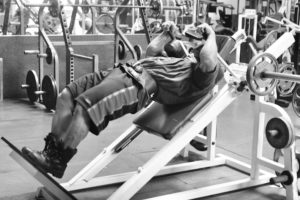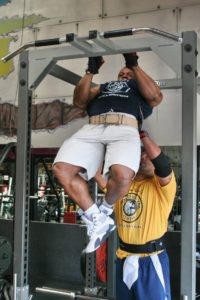
Creative ways to push your training to a higher level
By Strength Sensei CP
Publication Date: 2007
Those who have never pumped iron before often hire personal trainers to learn how to lift with good technique. This is wise. Lifting with optimal technique ensures that you target the muscles you want to target, while lifting with poor technique may increase your risk of injury. That said, sometimes it’s a good idea to cheat.
I’m not talking about skipping out on that last set of deadlifts, bouncing the bar off your chest in the bench press, or performing half squats instead of full. I’m referring to methods that enable you to work harder or, which is especially true for packing on muscle, prolonging the time your muscles are under tension.
Before going further, consider that there are some lifts where cheating methods should never be used, such as the Olympic lifts. Russian sports scientists have found that when weightlifters possess good technique, there is a better transfer of strength from squats to performance in the snatch and clean and jerk. Also, the technical nature of weightlifting is such that any cheating methods can adversely affect optimal technique and may increase the risk of injury.
Next, before using any cheating methods, you must know what good technique is. This may require investing in the services of a personal trainer. How do you shop for a good personal trainer? Well, success leaves clues. If a trainer’s clients demonstrate control when they lift, perform core lifts such as squats through a full range of motion, don’t get injured, and are making good progress, those are clues. If they have academic degrees and relevant certification, those are more clues. One more request.
Do not use cheating methods if you have structural imbalances. If structural imbalances affect your ability to perform an exercise correctly, cheating methods can only make it worse. Case in point: On May 15, 1998, I structurally balanced tested NHL player Jim McKenzie. I found that although he could close-grip bench press 280 pounds, he could only perform 3 reps in the single-arm external rotation with 8 pounds. Seriously, 8 pounds! Three months later, he could perform 8 reps with 35 pounds in that rotator cuff exercise. The result?
Despite not performing any bench presses during this initial training period, he maxed out at 331 pounds! His weak rotator cuff muscles were limiting his ability to press, so strengthening these muscles had to be a priority in his training. My point is, before looking at advanced training methods to get you a new max, and this includes “cheating” methods, ensure that you don’t have any structural balances creating weak links in your strength.
With that background, when is it OK to cheat?
First, cheating can enable you to overload the eccentric contraction of an exercise by “assisting” the concentric contraction — and consider that it’s the eccentric contraction that has the greatest effect on stimulating strength and hypertrophy. After performing a standing barbell curl to concentric failure, you could use your legs to swing the weight to shoulder level, then lower the weight slowly to extended arms. You could also perform military presses to concentric failure, then use a “leg kick” to help you push a few extra reps through the sticking point (or, as weightlifters would call this, a push press).
A training partner can also help you extend a set beyond concentric failure. Yes, I’m talking about forced reps. I understand that Tom “The Golden Eagle” Platz, a Mr. Olympia contender with the best legs in the business, would often use force reps. For example, after achieving concentric failure in leg extensions, he would have a training partner help him grind out a few more reps by assisting with the eccentric portion of the lift so that he could further trash his quads with a few eccentric reps.
 A training partner providing assistance during the concentric portion of chin-ups is a form of “cheating” that prolongs the time under tension of a set. (Photos by Miloš Šarčev)
A training partner providing assistance during the concentric portion of chin-ups is a form of “cheating” that prolongs the time under tension of a set. (Photos by Miloš Šarčev)
You can also bypass the concentric contraction (or come close to it) by performing eccentric-only training. Again, using the example of standing barbell curls, you could power clean a weight and slowly lower the weight to perform an eccentric reverse curl. Because the weight is relatively light for curls (compared to what most trainees can clean), you can probably perform the clean from the mid-thigh, not the floor.
If you want to learn more about effective cheating methods, I recommend picking up a copy of Jerry Telle’s Beyond 2001. Telle presents many intriguing methods to prolong the time under tension of an exercise, methods that could be considered cheating. For example, after performing a dumbbell fly to concentric failure, he would have you bend your elbows more, shortening your level arm. This change would enable you to complete a few more reps. At that point, he would have you immediately transition into dumbbell presses for a monster pump!
Can cheating on an exercise be a good thing? Absolutely, and that’s the honest truth!
